Top 10 Most Famous and Handsome Male Spies In The World Of All Time
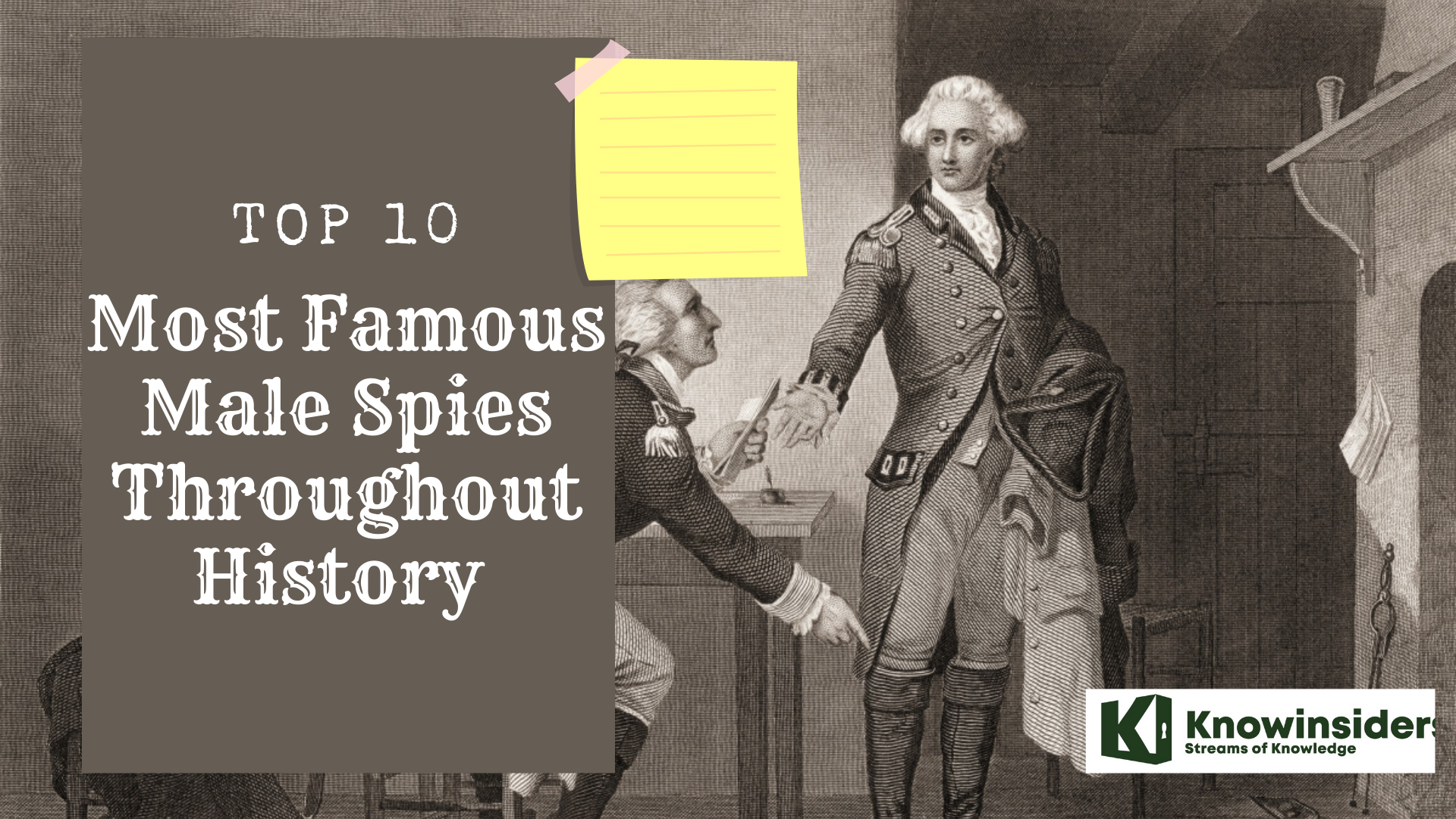 |
| Top 10 most famous male spies throughout history |
The world of espionage is shrouded in mystery. We attach romantic and idealized notions to being a spy, influenced by TV shows, books, and movies such as those featuring British agent James Bond — and these are all Bond movies ranked from worst to best.
But the reality is far more nuanced and complex — and far less glamorous. Alas, the only reason we know of many famous spies is because they were captured and often executed.
The List of top 10 most famous male spies throughout world history
10. Kim Philby (1912-1988)
9. Emil Julius Klaus Fuchs (1911-1988)
8. Rudolf Abel (1903-1971)
7. Sir William Stephenson (1896-1989)
6. William G. Sebold (1899-1970)
5. Frederick “Fritz” Joubert Duquesne (1877-1956)
4. Carl Lody (1877-1914)
3. Nathan Hale (1755-1776)
2. Benedict Arnold (1741-1801)
1. Sir Francis Walsingham (1532-1590)
Who are the top most famous and handsome male spies throughout world history
10. Kim Philby (1912-1988)
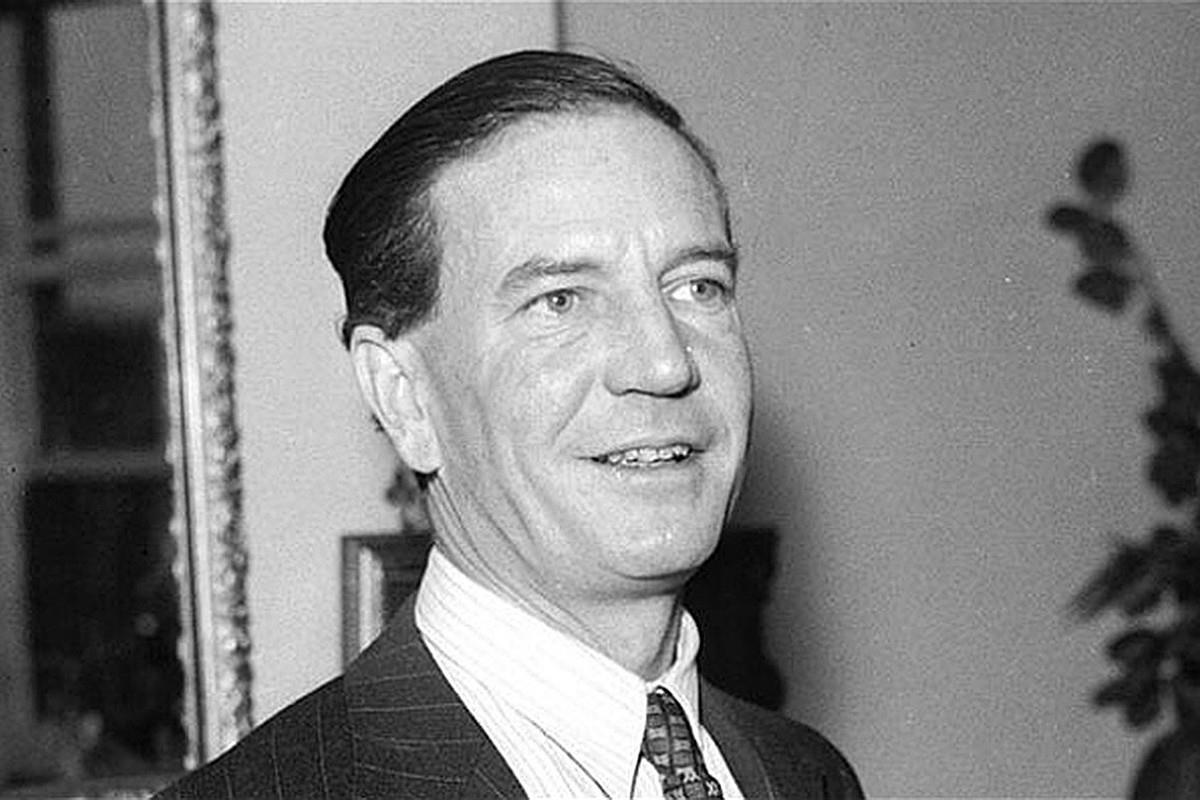 |
| Photo: Getty Images |
Harold Adrian Russell "Kim" Philby (1 January 1912 – 11 May 1988) was a British intelligence officer and a double agent for the Soviet Union. In 1963 he was revealed to be a member of the Cambridge Five, a spy ring which passed information to the Soviet Union during World War II and in the early stages of the Cold War. Of the five, Philby is believed to have been most successful in providing secret information to the Soviets.
Born in British India, Philby was educated at Westminster School and Trinity College, Cambridge. He was recruited by Soviet intelligence in 1934. After leaving Cambridge, Philby worked as a journalist and covered the Spanish Civil War and the Battle of France. In 1940 he began working for the United Kingdom's Secret Intelligence Service (SIS or MI6). By the end of the Second World War he had become a high-ranking member. In 1949 Philby was appointed first secretary to the British Embassy in Washington and served as chief British liaison with American intelligence agencies. During his career as an intelligence officer, he passed large amounts of intelligence to the Soviet Union, including a plot to subvert the communist rule of Albania.
He was also responsible for tipping off two other spies under suspicion of espionage, Donald Maclean and Guy Burgess, both of whom subsequently fled to Moscow in May 1951. The defections of Maclean and Burgess cast suspicion over Philby, resulting in his resignation from MI6 in July 1951. He was publicly exonerated in 1955, after which he resumed his career as both a journalist and a spy for SIS in Beirut. In January 1964, having finally been unmasked as a Soviet agent, Philby defected to Moscow, where he lived until his death in 1988.
| In February 1934, Philby married Litzi Friedmann, an Austrian Jewish communist whom he had met in Vienna. They subsequently moved to Britain; however, as Philby assumed the role of a fascist sympathiser, they separated. Litzi lived in Paris before returning to London for the duration of the war; she ultimately settled in East Germany. While working as a correspondent in Spain, Philby began an affair with Frances Doble, Lady Lindsay-Hogg, an actress and aristocratic divorcée who was an admirer of Franco and Hitler. They travelled together in Spain through August 1939. In 1940 he began living with Aileen Furse in London. Their first three children, Josephine, John and Tommy Philby, were born between 1941 and 1944. In 1946, Philby finally arranged a formal divorce from Litzi. He and Aileen were married on 25 September 1946, while Aileen was pregnant with their fourth child, Miranda. Their fifth child, Harry George, was born in 1950. Aileen suffered from psychiatric problems, which grew more severe during the period of poverty and suspicion following the flight of Burgess and Maclean. She lived separately from Philby, settling with their children in Crowborough while he lived first in London and later in Beirut. Weakened by alcoholism and frequent sickness, she died of influenza in December 1957. In 1956, Philby began an affair with Eleanor Brewer, the wife of The New York Times correspondent Sam Pope Brewer. Following Eleanor's divorce, the couple married in January 1959. After Philby defected to the Soviet Union in 1963, Eleanor visited him in Moscow. In November 1964, after a visit to the United States, she returned, intending to settle permanently. In her absence, Philby had begun an affair with Donald Maclean's wife, Melinda. He and Eleanor divorced and she departed Moscow in May 1965. Melinda left Maclean and briefly lived with Philby in Moscow. In 1968 she returned to Maclean. In 1971, Philby married Rufina Pukhova, a Russo-Polish woman twenty years his junior, with whom he lived until his death in 1988. |
9. Emil Julius Klaus Fuchs (1911-1988)
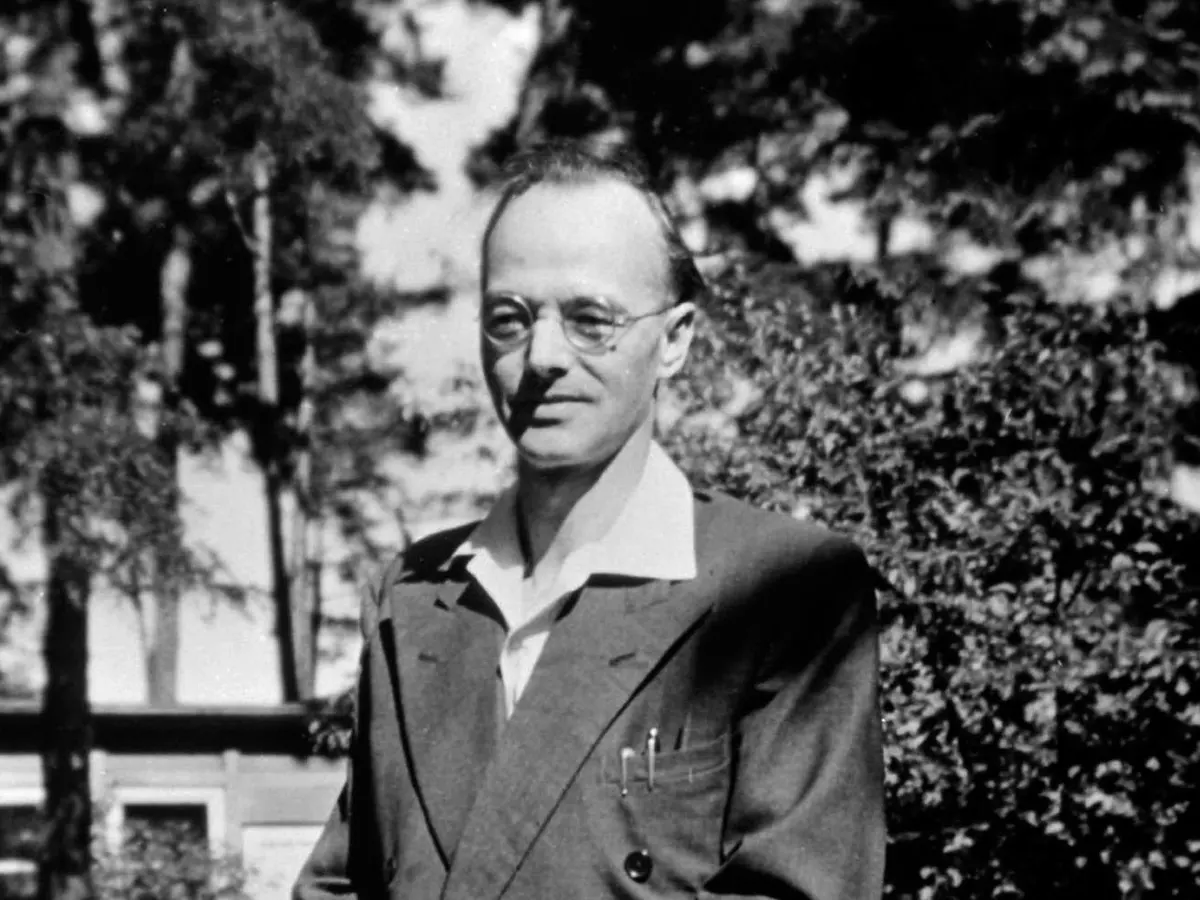 |
| Photo: PA |
Klaus Emil Julius Fuchs (29 December 1911 – 28 January 1988) was a German theoretical physicist and atomic spy who supplied information from the American, British, and Canadian Manhattan Project to the Soviet Union during and shortly after World War II. While at the Los Alamos National Laboratory, Fuchs was responsible for many significant theoretical calculations relating to the first nuclear weapons and, later, early models of the hydrogen bomb. After his conviction in 1950, he served nine years in prison in the United Kingdom and then moved to East Germany where he resumed his career as a physicist and scientific leader.
The son of a Lutheran pastor, Fuchs attended the University of Leipzig, where his father was a professor of theology, and became involved in student politics, joining the student branch of the Social Democratic Party of Germany (SPD), and the Reichsbanner Schwarz-Rot-Gold, the SPD's paramilitary organisation. He was expelled from the SPD in 1932, and joined the Communist Party of Germany (KPD). He went into hiding after the 1933 Reichstag fire, and fled to the United Kingdom, where he received his PhD from the University of Bristol under the supervision of Nevill Mott, and his DSc from the University of Edinburgh, where he worked as an assistant to Max Born.
After the Second World War broke out in Europe, he was interned in the Isle of Man, and later in Canada. After he returned to Britain in 1941, he became an assistant to Rudolf Peierls, working on "Tube Alloys"—the British atomic bomb project. He began passing information on the project to the Soviet Union through Ursula Kuczynski, codenamed "Sonya", a German communist and a major in Soviet military intelligence who had worked with Richard Sorge's spy ring in the Far East. In 1943, Fuchs and Peierls went to Columbia University, in New York City, to work on the Manhattan Project. In August 1944, Fuchs joined the Theoretical Physics Division at the Los Alamos Laboratory, working under Hans Bethe. His chief area of expertise was the problem of implosion, necessary for the development of the plutonium bomb. After the war, he returned to the UK and worked at the Atomic Energy Research Establishment at Harwell as head of the Theoretical Physics Division.
In January 1950, Fuchs confessed that he was a spy. A British court sentenced him to fourteen years' imprisonment and stripped him of his British citizenship. He was released in 1959, after serving nine years, and emigrated to the German Democratic Republic (East Germany), where he was elected to the Academy of Sciences and became a member of the Socialist Unity Party of Germany (SED) central committee. He was later appointed deputy director of the Institute for Nuclear Research in Rossendorf, where he served until he retired in 1979.
8. Rudolf Abel (1903-1971)
 |
| Photo: topwar.ru |
Rudolf Ivanovich Abel (Russian: Рудольф Иванович Абель), real name William August Fisher (11 July 1903 – 15 November 1971), was a Soviet intelligence officer. He adopted his alias when arrested on charges of conspiracy by the FBI in 1957.
Fisher was born and grew up in Newcastle upon Tyne in the North of England in the United Kingdom to Russian émigré parents. He moved to Russia in the 1920s, and served in the Soviet military before undertaking foreign service as a radio operator in Soviet intelligence in the late 1920s and early 30s. He later served in an instructional role before taking part in intelligence operations against the Germans during World War II. After the war, he began working for the KGB, which sent him to the United States where he worked as part of a spy ring based in New York City.
In 1957, the U.S. Federal Court in New York convicted Fisher on three counts of conspiracy as a Soviet spy for his involvement in what became known as the Hollow Nickel Case and sentenced him to 30 years' imprisonment at Atlanta Federal Penitentiary, Georgia.[5] He served just over four years of his sentence before he was exchanged for captured American U-2 pilot Francis Gary Powers. Back in the Soviet Union, he lectured on his experiences. He died in 1971 at the age of 68.
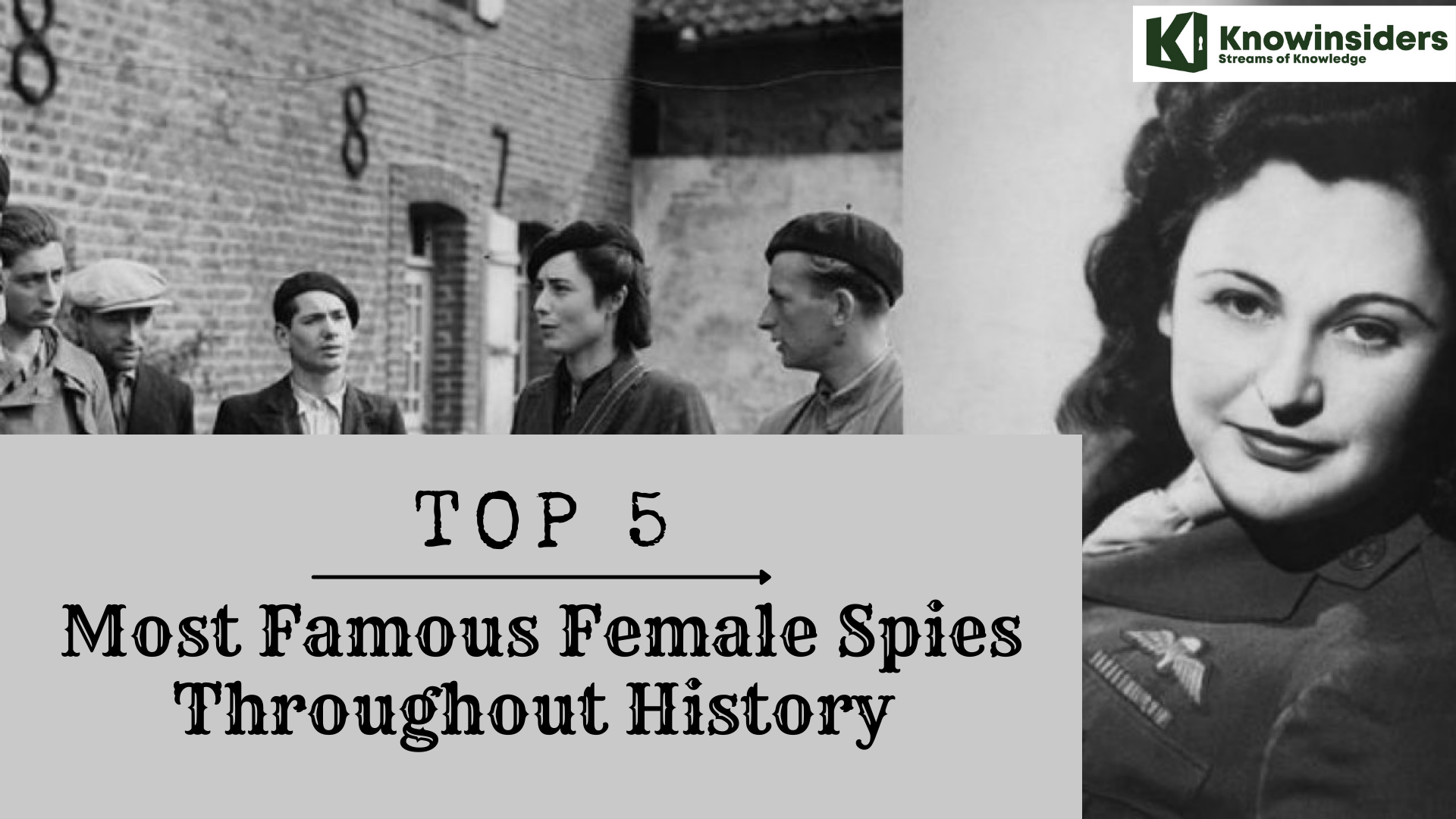 Top 5 Most Famous and Beautiful Female Spies In The World Of All Time Top 5 Most Famous and Beautiful Female Spies In The World Of All Time Discover the most famous and beautiful female spies in the world of all time in the article below. |
7. Sir William Stephenson (1896-1989)
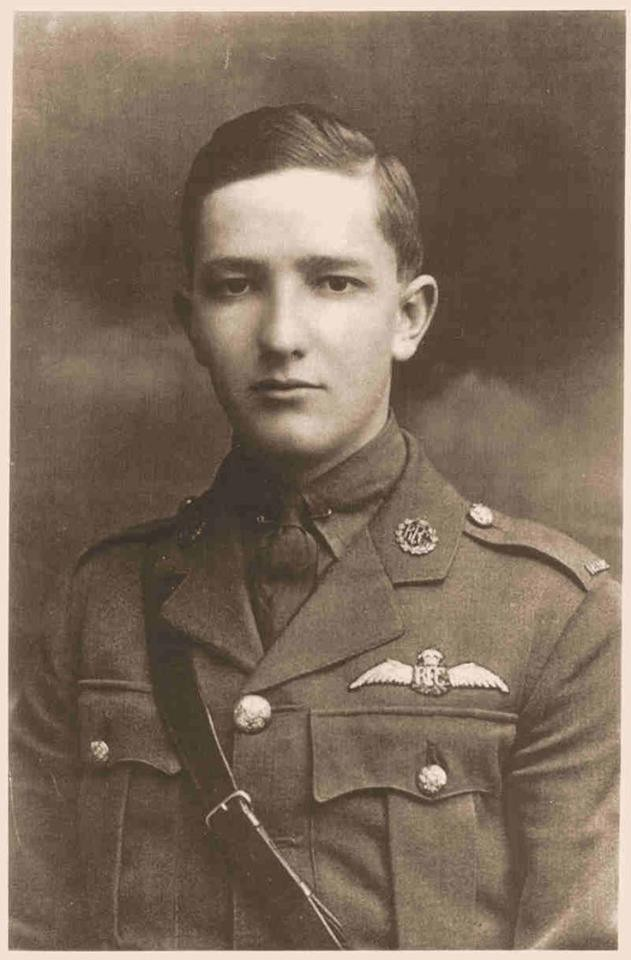 |
| Photo: Getty Images |
Sir William Samuel Stephenson CC MC DFC, (23 January 1897 – 31 January 1989) was a Canadian soldier, airman, businessman, inventor, spymaster, and the senior representative of British Security Coordination (BSC) for the entire western hemisphere during World War II. He is best known by his wartime intelligence codename Intrepid. Many people consider him to be one of the real-life inspirations for James Bond. Ian Fleming himself once wrote, "James Bond is a highly romanticized version of a true spy. The real thing is ... William Stephenson."
As head of the British Security Coordination, Stephenson handed over British scientific secrets to Franklin D. Roosevelt and relayed American secrets to Winston Churchill. In addition, Stephenson has been credited with changing American public opinion from an isolationist stance to a supportive tendency regarding America's entry into World War II.
Stephenson was born William Samuel Clouston Stanger on 23 January 1897, in Point Douglas, Winnipeg, Manitoba. His mother was Icelandic, and his father was Scottish from the Orkney Islands. He was adopted early by an Icelandic family after his parents could no longer care for him, and given his foster parents' name, Stephenson.
He left school at a young age and worked as a telegrapher. In January 1916, during World War I, he volunteered for service in the 101st Overseas Battalion (Winnipeg Light Infantry), Canadian Expeditionary Force. He left for England on RMS Olympic on 29 June 1916, arriving on 6 July 1916. The 101st Battalion was broken up in England, and he was transferred to the 17th Reserve Battalion in East Sandling, Kent. On 17 July he was transferred to the Canadian Engineer Training Depot. He was attached to the Sub Staff, Canadian Training Depot Headquarters, in Shorncliffe, and was promoted to Sergeant (with pay of Clerk) in May 1917. In June 1917 he was "on command" to the Cadet Wing of the Royal Flying Corps at Denham Barracks, Buckinghamshire.
By the end of World War I, Stephenson had achieved the rank of Captain and earned the Military Cross and the Distinguished Flying Cross.
For his extraordinary service to the war effort, he was made a Knight Bachelor by King George VI in the 1945 New Year Honours. In recommending Stephenson for the knighthood, Winston Churchill wrote: "This one is dear to my heart."
In November 1946 Stephenson received the Medal for Merit from President Harry S. Truman, at that time the highest U.S. civilian award. He was the first non-American to be so honoured. General "Wild Bill" Donovan presented the medal. The citation paid tribute to Stephenson's "valuable assistance to America in the fields of intelligence and special operations".
| The "Quiet Canadian" was recognized by his native land late: he was made a Companion of the Order of Canada on 17 December 1979, and invested in the Order on 5 February 1980. On 2 May 2000, CIA Executive Director David W. Carey, representing Director of Central Intelligence George Tenet and Deputy Director John A. Gordon, accepted from the Intrepid Society of Winnipeg, Manitoba, a bronze statuette of Stephenson. In 1997, a new public library built in Winnipeg was named for him, after a vote was held to choose the name of the new library. Leo Mol donated a miniature of his statue of Stephenson to the library. On 24 July 1999, The Princess Royal unveiled, in Stephenson's hometown of Winnipeg, Manitoba, near the Provincial Legislature on York Street, Leo Mol's life-sized bronze statue of Stephenson in military aviator uniform. The monument is dedicated to Stephenson's memory and achievements. On 15 November 2009, Water Avenue in downtown Winnipeg was renamed William Stephenson Way. Whitby, Ontario has a street named for Stephenson. It connects with streets named Intrepid and Overlord. The town is also home to Sir William Stephenson Public School, which opened in 2004. In Oshawa, Ontario, Branch 637 of the Royal Canadian Legion is named for Stephenson. |
6. William G. Sebold (1899-1970)
 |
| Photo: WSJ |
William G. Sebold (Gottlieb Adolf Wilhelm Sebold; March 10, 1899 in Mülheim, Germany – February 16, 1970 in Napa, California) was a United States citizen who was coerced into becoming a spy when he visited Germany after being pressured by several high-ranking Nazi members. He informed the American Consul General in Cologne before leaving Germany and became a double agent for the FBI. With the assistance of another German agent, Fritz Duquesne, he recruited 33 agents that became known as the Duquesne Spy Ring. In June 1941, the Federal Bureau of Investigation arrested all of the agents. They were convicted and sentenced to a total of 300 years in prison.
Sebold served in the German army engineering corps during World War I. After emigrating to the United States in 1922, he married and worked in industrial and aircraft plants throughout the United States and South America. On February 10, 1936, he became a naturalized citizen of the United States.
He returned to Germany in February 1939 to visit his mother in Mülheim. Upon his arrival in Hamburg, Germany, he was approached by a Gestapo agent who said that Sebold would be contacted in the near future due to the knowledge he obtained while working in United States aircraft factories. Sebold proceeded to Mülheim where he obtained employment.
After the threats to his family, his life, and his citizenship, Sebold agreed to cooperate with the Nazis. He was then sent to a seven-week training program in Hamburg, Germany, where he learned to operate a clandestine shortwave radio, which he would set up when he returned to the United States.
Ritter gave Sebold final instructions before he left for the United States, including shortwave radio codes and the use of microphotographs. Sebold was given the alias "Harry Sawyer", the code name TRAMP, and Abwehr number A.3549.
Sebold was tasked to meet with various spies, pass along instructions to them from Germany, receive messages in return, and transmit them back in code to Germany. The intention was to pull off the efforts of spies who were passing technological secrets to the Germans during World War II.
In June 1941, the FBI arrested 33 German agents that were part of Sebold's network. Nineteen of the agents arrested pleaded guilty. The remainder were tried in Federal District Court, Brooklyn, New York, beginning 3 September 1941. The jury found all 14 guilty on 13 December 1941. The 33 members of the Duquesne Spy Ring were sentenced to serve a total of over 300 years in prison. Duquesne was sentenced to 18 years in prison. The Duquesne Spy Ring remains the largest espionage case in U.S. history that ended in convictions.
As a result of the massive investigation, when America entered the war the FBI was confident that there was no major German espionage network hidden in U.S. society.
When the trial ended, Sebold disappeared. He entered a government witness protection program and moved to California under another assumed identity. He had countless jobs, even trying to be a chicken farmer, but could never hold down a job and was constantly plagued by bad health. Additionally, letters from his family back in Germany explained that the Nazis still wanted to exact their revenge, leaving him in a constant state of fear. Sebold was diagnosed with manic depression and committed to Napa State Hospital in 1965. Five years later he suffered a heart attack and died.
5. Frederick “Fritz” Joubert Duquesne (1877-1956)
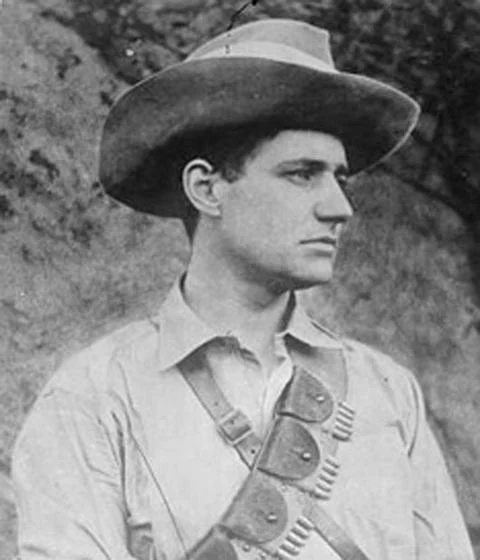 |
| Photo: Alchetron |
Frederick "Fritz" Joubert Duquesne ( 21 September 1877 – 24 May 1956; sometimes Du Quesne) was a South African Boer and German soldier, big-game hunter, journalist, and spy.
He fought on the side of the Boers in the Second Boer War and as a secret agent for Germany during both World Wars. He gathered human intelligence, led spy rings and carried out sabotage missions as a covert field asset in South Africa, Great Britain, Central and South America, and the United States. He went by many aliases, fictionalized his identity and background on multiple occasions, and operated as a con man. As a Boer spy he was known as the "Black Panther", in World War II he operated under the code name DUNN, and in FBI files he is frequently referred to as "The Duke". He was captured, convicted, and escaped several prisons.
During the Second Boer War, from 1899 to 1902, Duquesne was captured and imprisoned three times by the British and once by the Portuguese, and each time he escaped. On one occasion he infiltrated the British army, became a British officer, and led an attempt to sabotage Cape Town and to assassinate the commander-in-chief Lord Kitchener. His team was given up by an informant and all were captured and sentenced to death. After a failed attempt to escape prison in Cape Town, he was sent to prison in Bermuda, but he escaped to the United States and became an American citizen. In World War I, he became a spy and ring leader for Germany and during this time he sabotaged British merchant ships in South America with concealed bombs and destroyed several. He sometimes purchased insurance on merchandise he shipped on the vessels he sabotaged and then filed claims for damages.
He became known as "the man who killed Kitchener" since he claimed to have guided a German U-boat to sink HMS Hampshire on which Lord Kitchener was en route to Russia in 1916, although forensics of the ship do not support this claim. After he was caught by federal agents in New York in 1917, he feigned paralysis for two years and cut the bars of his cell to make his escape, thereby avoiding deportation to England where he faced execution for the deaths of British sailors. In 1932, he was again captured in New York by federal agents and charged with both homicide and for being an escaped prisoner, only this time he was set free after Britain declined to pursue the wartime crimes. The last time he was captured and imprisoned was in 1941 when he and 32 other members of the Duquesne Spy Ring working for Nazi Germany were caught by William G. Sebold, a double agent with the FBI and spying for the Germans. Duquesne was later convicted in the largest espionage conviction in the history of the United States.
Between wars, Duquesne served as an adviser on big game hunting to U.S. President Theodore Roosevelt, as a publicist in the movie business, as a journalist, as a fictional Australian war hero, and as head of the New Food Society in New York.
Duquesne often took on many identities, reinvented his past at will, attached his ancestry to aristocratic clans, granted himself military titles and medals, and spoke of many people, some fact and some fictional.
 Top 10 Most Mysterious People In The World Top 10 Most Mysterious People In The World There are things on earth that we have never found out, as for the list of the 10 most mysterious people in the world right ... |
4. Carl Lody (1877-1914)
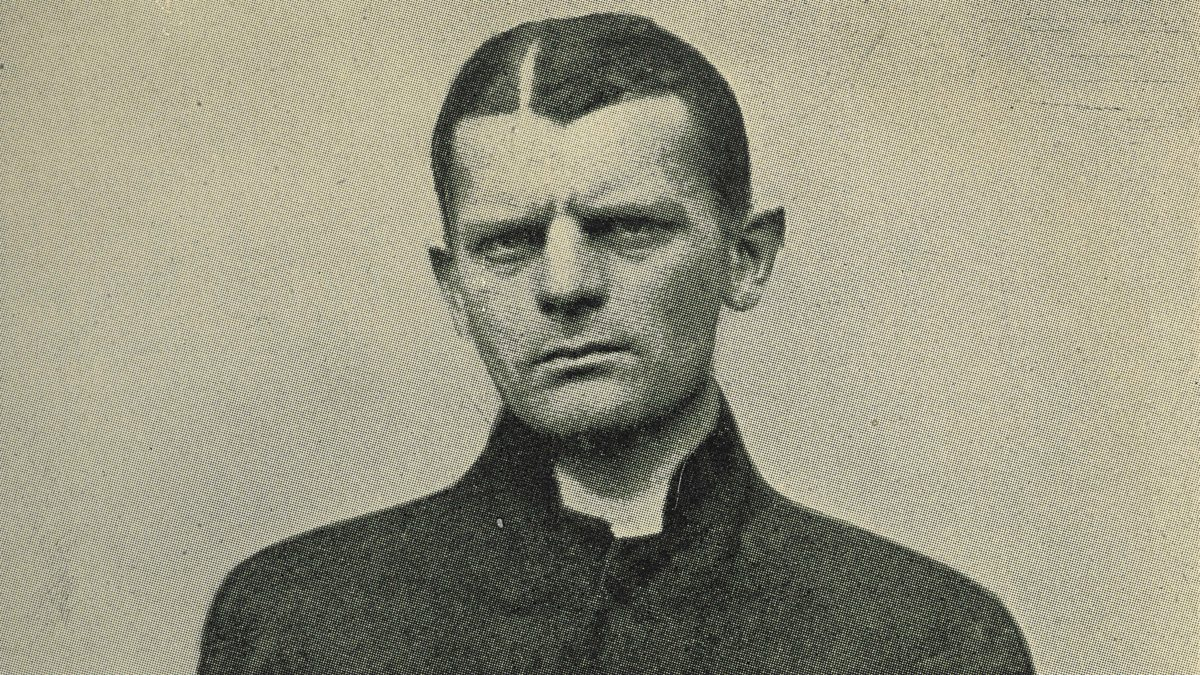 |
| Photo: BBC |
Carl Hans Lody, alias Charles A. Inglis (20 January 1877 – 6 November 1914; name occasionally given as Karl Hans Lody), was a reserve officer of the Imperial German Navy who spied in the United Kingdom in the first few months of the First World War.
He grew up in Nordhausen in central Germany and was orphaned at an early age. After embarking on a nautical career at the age of 16, he served briefly in the Imperial German Navy at the start of the 20th century. His ill health forced him to abandon a naval career, but he remained in the naval reserve. He joined the Hamburg America Line to work as a tour guide. While escorting a party of tourists, he met and married a German-American woman, but the marriage broke down after only a few months. His wife divorced him and he returned to Berlin.
In May 1914, two months before war broke out, Lody was approached by German naval intelligence officials. He agreed to their proposal to employ him as a peacetime spy in southern France, but the outbreak of the First World War on 28 July 1914 resulted in a change of plans. In late August, he was sent to the United Kingdom with orders to spy on the Royal Navy. He posed as an American – he could speak English fluently, with an American accent – using a genuine U.S. passport purloined from an American citizen in Germany. Over the course of a month, Lody travelled around Edinburgh and the Firth of Forth observing naval movements and coastal defences. By the end of September 1914, he was becoming increasingly worried for his safety as a rising spy panic in Britain led to foreigners coming under suspicion. He travelled to Ireland, where he intended to keep a low profile until he could make his escape from the UK.
Lody had been given no training in espionage before embarking on his mission and within only a few days of arriving he was detected by the British authorities. His un-coded communications were detected by British censors when he sent his first reports to an address in Stockholm that the British knew was a postbox for German agents. The British counter-espionage agency MI5, then known as MO5(g), allowed him to continue his activities in the hope of finding out more information about the German spy network. His first two messages were allowed to reach the Germans but later messages were stopped, as they contained sensitive military information. At the start of October 1914, concern over the increasingly sensitive nature of his messages prompted MO5(g) to order Lody's arrest. He had left a trail of clues that enabled the police to track him to a hotel in Killarney, Ireland, in less than a day.
Lody was put on public trial – the only one held for a German spy captured in the UK in either World War – before a military court in London at the end of October. He did not attempt to deny that he was a German spy. His bearing in court was widely praised as forthright and courageous by the British press and even by the police and MO5(g) officers who had tracked him down. He was convicted and sentenced to death after a three-day hearing. Four days later, on 6 November 1914, Lody was shot at dawn by a firing squad at the Tower of London in the first execution there in 167 years. His body was buried in an unmarked grave in East London. When the Nazi Party came to power in Germany in 1933, it declared him a national hero. Lody became the subject of memorials, eulogies and commemorations in Germany before and during the Second World War. A destroyer bore his name.
3. Nathan Hale (1755-1776)
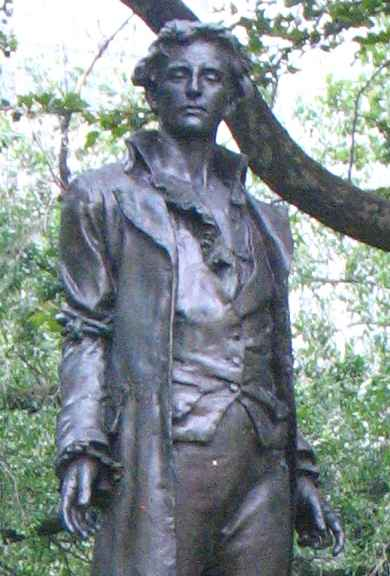 |
| Photo: Wikipedia |
Nathan Hale (June 6, 1755 – September 22, 1776) was an American Patriot, soldier and spy for the Continental Army during the American Revolutionary War. He volunteered for an intelligence-gathering mission in New York City but was captured by the British and executed. Hale has long been considered an American hero and, in 1985, he was officially designated the state hero of Connecticut.
Nathan Hale was born in Coventry, Connecticut, in 1755, to Deacon Richard Hale and Elizabeth Strong, a descendant of Elder John Strong. He was a great-grandson of Reverend John Hale, an important figure in the Salem witch trials of 1692. He was also the grand-uncle of Edward Everett Hale, a Unitarian minister, writer, and activist noted for social causes including abolitionism. He was the uncle of journalist Nathan Hale, who founded the Boston Daily Advertiser and helped establish the North American Review.
In 1769, when Nathan Hale was fourteen years old, he was sent with his brother Enoch, who was sixteen, to Yale College. He was a classmate of fellow Patriot spy Benjamin Tallmadge. The Hale brothers belonged to the Linonian Society of Yale, which debated topics in astronomy, mathematics, literature, and the ethics of slavery. Nathan graduated with first-class honors in 1773 at age 18 and became a teacher, first in East Haddam and later in New London.
Hale volunteered on September 8, 1776, to go behind enemy lines and report on British troop movements, which he knew was an act of spying, which would be immediately punishable by death. He was ferried across the Long Island Sound to Huntington, New York, on British-controlled Long Island, on September 12. Hale planned to disguise himself as a Dutch schoolteacher looking for work, though he did not travel under an assumed name and reportedly carried with him his Yale diploma bearing his real name.
According to the standards of the time, spies were hanged as illegal combatants. By all accounts, Hale comported himself well before the hanging. Frederick MacKensie, a British officer, wrote this diary entry for the day:
“He behaved with great composure and resolution, saying he thought it the duty of every good Officer, to obey any orders given him by his Commander-in-Chief; and desired the Spectators to be at all times prepared to meet death in whatever shape it might appear.”
On the morning of September 22, 1776, Hale was marched along Post Road to the Park of Artillery, which was next to a public house called the Dove Tavern (at modern-day 66th Street and Third Avenue), and hanged. He was 21 years old.
No official records were kept of Hale's final speech. It has traditionally been reported that his last words, either entirely or in part, were: "I only regret that I have but one life to lose for my country." The account of the quote originated with British Captain John Montresor, who was present at the hanging. The next day, he spoke with American Captain William Hull under a flag of truce.
2. Benedict Arnold (1741-1801)
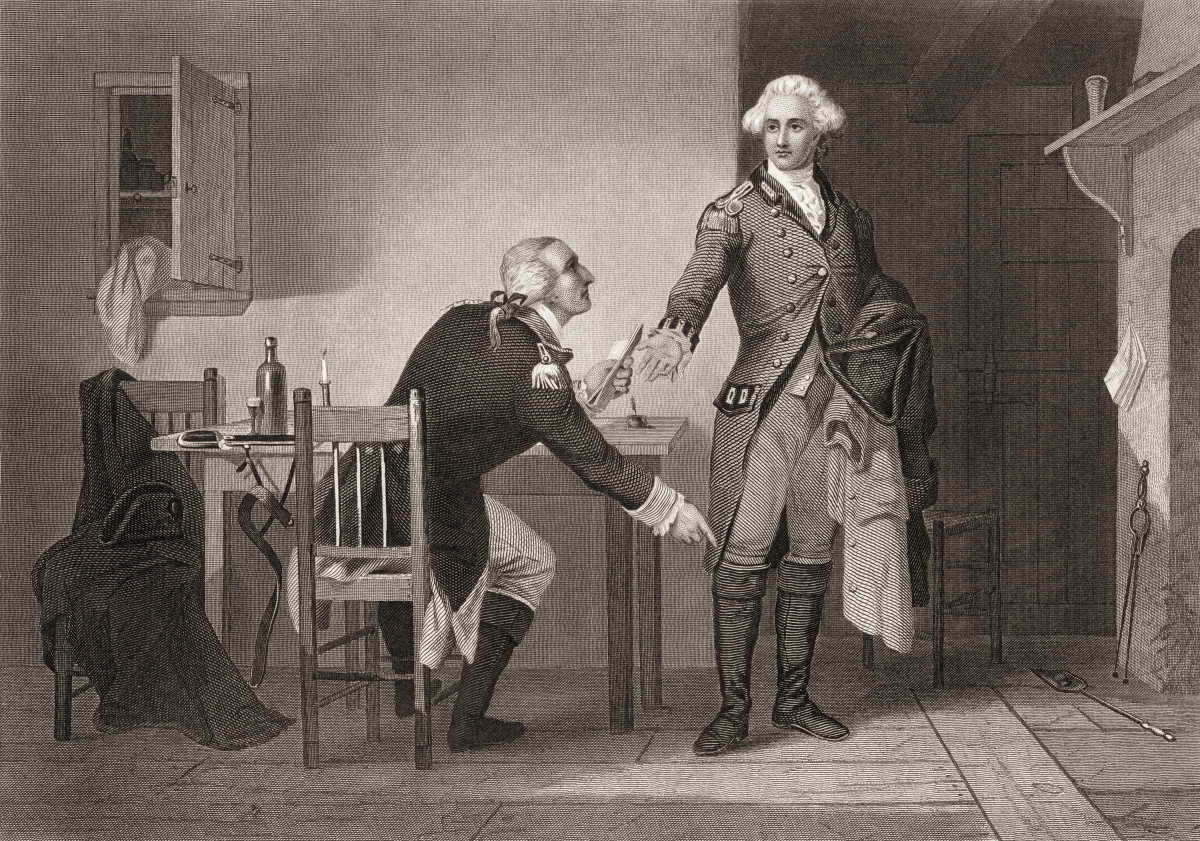 |
| Photo: Getty Images |
Benedict Arnold (14 January 1741– 14 June 1801) was an American military officer who served during the Revolutionary War. He fought with distinction for the American Continental Army, rising to the rank of major general, before defecting to the British side of the conflict in 1780. General George Washington had given him his fullest trust and placed him in command of West Point, New York. Arnold planned to surrender the fort to British forces, but the plot was discovered in September 1780 and he fled to the British lines. Arnold received a commission as a brigadier general in the British Army, commanding the American Legion in the later part of the conflict. Arnold's name quickly became a byword in the United States for treason and betrayal because he led the British army in battle against the very men whom he had once commanded.
Arnold was born in Connecticut and was a merchant operating ships on the Atlantic Ocean when the war began in 1775. He joined the growing army outside Boston and distinguished himself through acts of intelligence and bravery. His actions included the Capture of Fort Ticonderoga in 1775, defensive and delaying tactics at the Battle of Valcour Island on Lake Champlain in 1776 which allowed American forces time to prepare New York's defenses, the Battle of Ridgefield, Connecticut (after which he was promoted to major general), operations in relief of the Siege of Fort Stanwix, and key actions during the pivotal Battles of Saratoga in 1777, in which he suffered leg injuries that halted his combat career for several years.
Arnold repeatedly claimed that he was passed over for promotion by the Continental Congress, while other officers obtained credit for some of his accomplishments. Others in his military and political circles brought charges against him of corruption or other malfeasance, but most often he was acquitted in formal inquiries. Congress investigated his accounts, however, and concluded that he was indebted to Congress, and he borrowed heavily to maintain a lavish lifestyle.
Arnold mingled with Loyalist sympathizers in Philadelphia and married into one such family by wedding Peggy Shippen. She was a close friend of British major John André and kept in contact with him when he became head of the British espionage system in New York. Many historians point to her as facilitating Arnold's plans to switch sides; he opened secret negotiations with André, and Peggy relayed the messages. The British promised £20,000 for the capture of West Point, a major American stronghold; Washington greatly admired Arnold and gave him command of that fort in July 1780. His scheme was to surrender the fort to the British, but it was exposed in September 1780 when Patriot militia captured André carrying papers which revealed the plot. Arnold escaped; André was hanged.
Arnold received a commission as a brigadier general in the British Army, an annual pension of £360, and a lump sum of over £6,000. He led British forces in the Raid of Richmond and nearby areas, and they burned much of New London, Connecticut, to the ground and slaughtered surrendering forces after the Battle of Groton Heights—just a few miles downriver from the town where he had grown up. In the winter of 1782, he and Peggy moved to London, England. He was well received by King George III and the Tories but frowned upon by the Whigs and most Army officers. In 1787, he moved to Canada to a merchant business with his sons Richard and Henry. He was extremely unpopular there and returned to London permanently in 1791, where he died ten years later.
1. Sir Francis Walsingham (1532-1590)
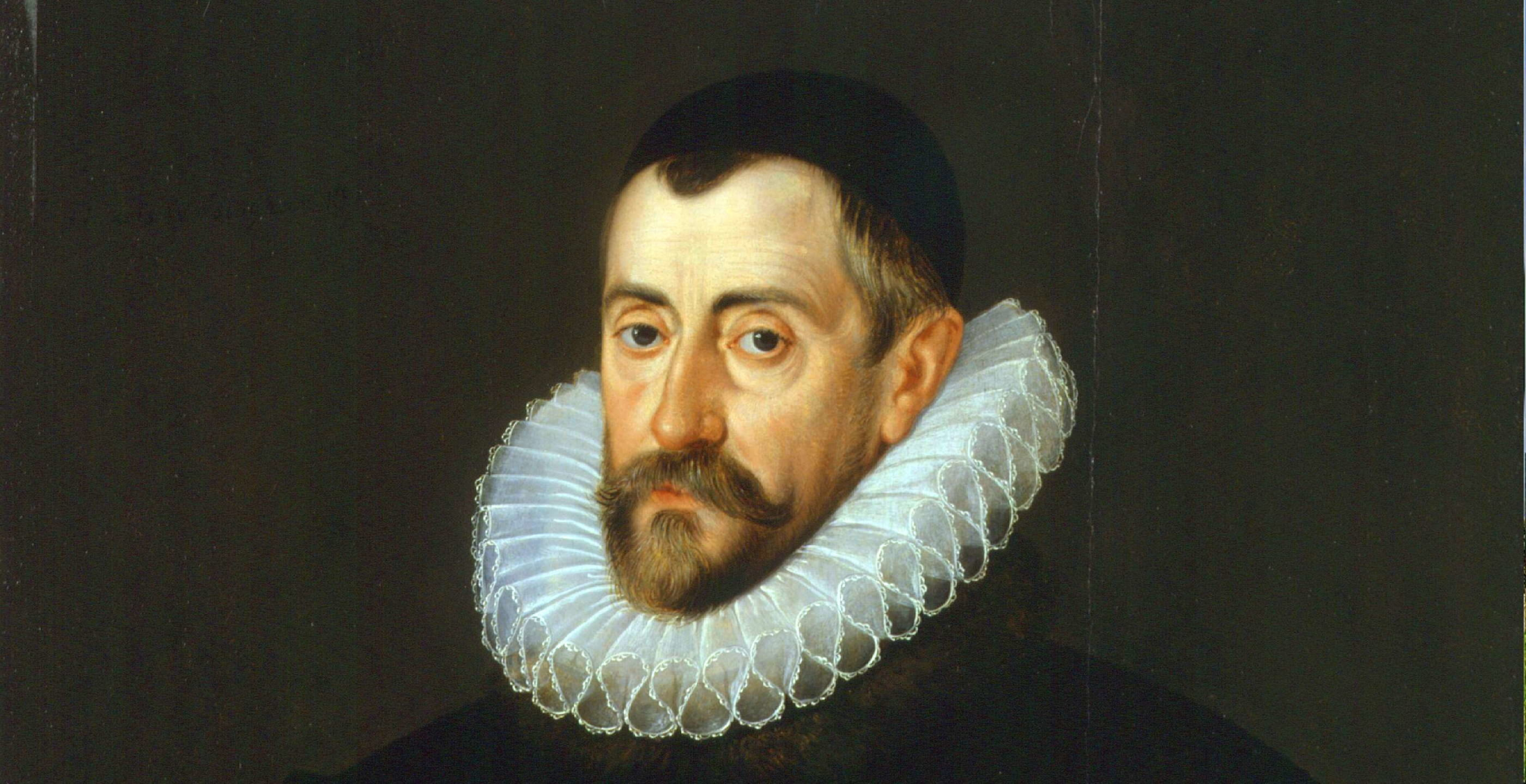 |
| Photo: Historic UK |
Sir Francis Walsingham (c. 1532 – 6 April 1590) was principal secretary to Queen Elizabeth I of England from 20 December 1573 until his death and is popularly remembered as her "spymaster".
Born to a well-connected family of gentry, Walsingham attended Cambridge University and travelled in continental Europe before embarking on a career in law at the age of twenty. A committed Protestant, during the reign of the Catholic Queen Mary I of England he joined other expatriates in exile in Switzerland and northern Italy until Mary's death and the accession of her Protestant half-sister, Elizabeth.
Walsingham rose from relative obscurity to become one of the small coterie who directed the Elizabethan state, overseeing foreign, domestic and religious policy. He served as English ambassador to France in the early 1570s and witnessed the St. Bartholomew's Day massacre. As principal secretary, he supported exploration, colonization, the use of England's maritime strength and the plantation of Ireland. He worked to bring Scotland and England together. Overall, his foreign policy demonstrated a new understanding of the role of England as a maritime Protestant power with intercontinental trading ties. He oversaw operations that penetrated Spanish military preparation, gathered intelligence from across Europe, disrupted a range of plots against Elizabeth and secured the execution of Mary, Queen of Scots.
 Top 10 Most Beautiful and Hottest Female Models in Italy - Updated Top 10 Most Beautiful and Hottest Female Models in Italy - Updated Who is your favorite hottest Italian model? Check out right below the list of the 10 hottest female models in Italy today. |
 Top 10 Hottest Female Models in UK Today Top 10 Hottest Female Models in UK Today England is swarming with a sea of beautiful “glamour models.” Check out the list of the 10 hottest models in the UK right below! |
 Top 10 Most Hottest Female Models in France Today Top 10 Most Hottest Female Models in France Today Models in France are well-known worldwide for their beauty and talent. Check out right below a list of the 10 most beautiful female models in ... |
 Top 10 Richest Tennis Players In The World Today Top 10 Richest Tennis Players In The World Today A professional tennis player has to be really hardworking and dedicated towards his goals to reach the very top, therefore they deserved the tennis's rewards. ... |


























